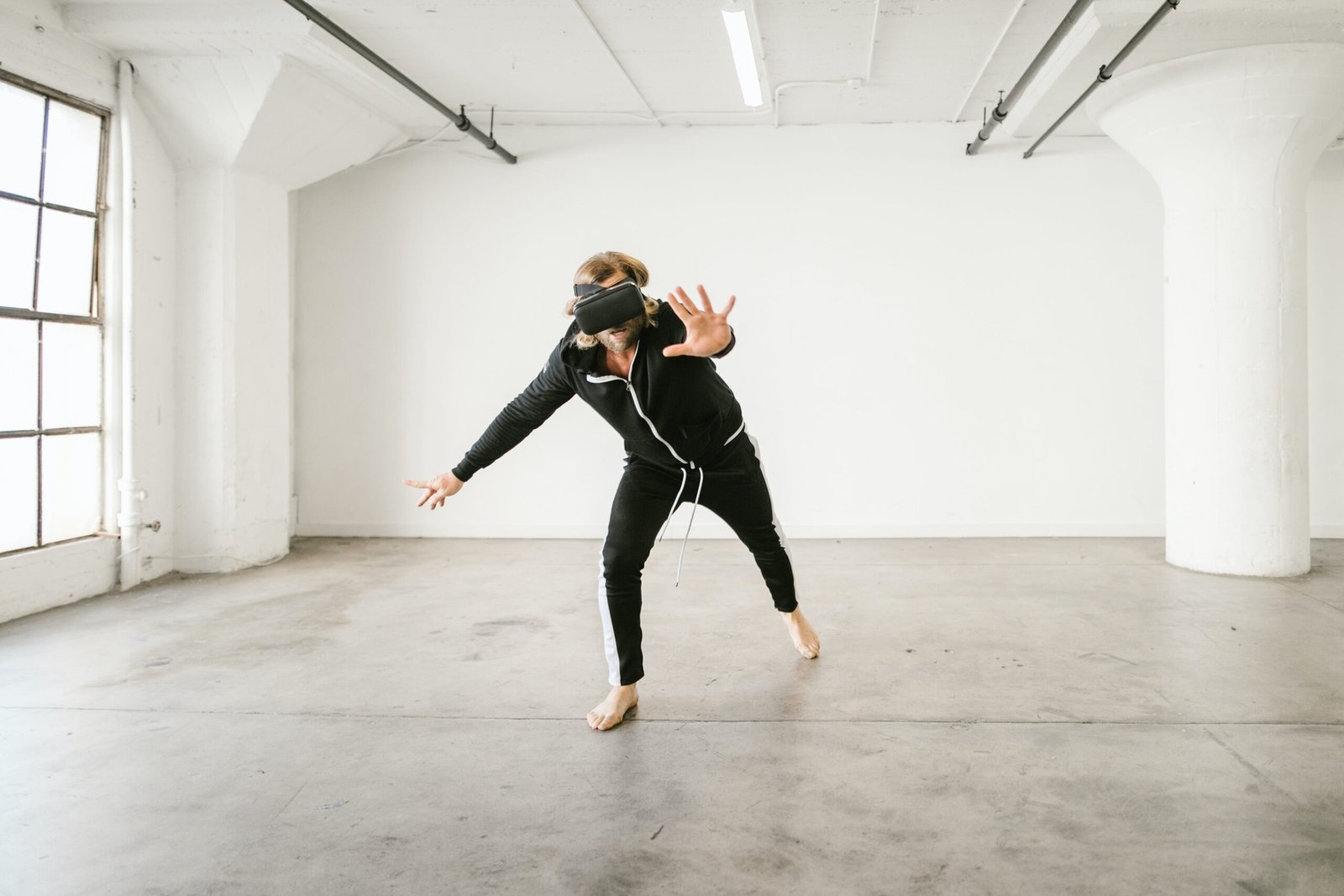
Maintaining a healthy sleep posture is essential for a good night’s rest, and for those who prefer side sleeping, it becomes even more crucial. In this article, explore the best practices for ensuring an optimal sleep posture while on your side. Discover helpful tips and techniques that will not only enhance your overall sleep quality but also alleviate any discomfort or strain on your neck, back, and shoulders. By implementing these practices, you can wake up feeling refreshed and revitalized, ready to take on the day ahead.

Choosing the Right Mattress
Consider Your Preferred Firmness Level
When it comes to getting a good night’s sleep, the firmness of your mattress plays a crucial role. The ideal level of firmness is subjective and can vary depending on your personal preferences, body type, and any existing health conditions. Some prefer a softer mattress that offers a plush, sinking-in feeling, while others may find a firmer surface more comfortable.
Consider your sleeping position when selecting the firmness level. Side sleepers tend to benefit from a mattress that offers some degree of cushioning to relieve pressure on the hips and shoulders. A medium to medium-soft mattress is often recommended for side sleepers as it provides a good balance between support and comfort.
Look for a Supportive Mattress
Support is another important factor to consider when choosing a mattress. A supportive mattress helps maintain proper spinal alignment while you sleep, preventing aches and pains in the morning. Look for a mattress that contours to your body’s natural curves and provides adequate support to your shoulders, hips, and lower back.
Memory foam mattresses are known for their excellent support and ability to contour to your body shape. They distribute your body weight evenly, relieving pressure points and promoting a healthier sleep posture. Latex and hybrid mattresses can also provide good support, depending on their construction and materials used.
Opt for a Pressure-Relieving Surface
One of the challenges of side sleeping is the risk of developing pressure points in certain areas of the body, such as the shoulders and hips. To combat this, opt for a mattress with a pressure-relieving surface. Memory foam and latex mattresses are well-known for their ability to alleviate pressure by conforming to your body shape and evenly distributing weight.
Look for mattresses with multiple comfort layers or those that incorporate specialized foam layers, such as gel-infused memory foam or latex with contouring properties. These materials help reduce pressure points and promote better circulation, allowing you to wake up feeling refreshed and without any discomfort.
Selecting a Suitable Pillow
Choose a Pillow with the Appropriate Height
A crucial aspect of maintaining a healthy sleep posture while side sleeping is choosing the right pillow. The height of your pillow significantly impacts the alignment of your neck and spine. Using a pillow that is too high or too low can result in neck and shoulder pain, leading to a restless night’s sleep.
For side sleepers, it is generally recommended to use a pillow with a higher loft to fill the gap between your head and shoulder. This helps keep your neck aligned with your spine, reducing strain on the muscles and preventing any potential discomfort. Experiment with different pillow heights to find the one that best suits your individual needs.
Use a Pillow That Supports Your Neck
In addition to the height, it is important to choose a pillow that provides adequate support to your neck. A pillow that offers proper neck support helps align your spine and prevents any potential misalignment that can lead to stiffness or pain.
Look for pillows specifically designed for side sleepers, as they often feature a contour or ergonomic shape that cradles your neck and keeps it in a neutral position. Memory foam pillows are a popular choice as they can conform to the shape of your neck and provide customized support. Feathers or down pillows can also offer good support, depending on their fill density.
Consider a Body Pillow
If you find yourself struggling with maintaining proper spinal alignment throughout the night, consider using a body pillow. Body pillows are longer than traditional pillows and can be hugged or placed between your legs to support your body from head to toe.
By placing a body pillow between your legs, you can help align your hips, pelvis, and spine, reducing strain on the lower back. This can be particularly beneficial for pregnant women or individuals with lower back pain. Experiment with different positions and pillow placements to find the most comfortable and supportive arrangement for you.

Positioning Your Body
Align Your Head and Spine
Proper alignment of your head and spine is essential for maintaining a healthy sleep posture while side sleeping. The goal is to keep your head in line with your spine, minimizing any strain or tension on your neck and shoulders.
To achieve this, ensure that your pillow adequately supports your head and neck, as mentioned earlier. Avoid tilting your head too far up or down, as this can place stress on your neck and lead to discomfort. It may take some trial and error to find the perfect pillow height and positioning, but the effort is worth it for a peaceful night’s sleep.
Keep Your Shoulders Level
Another important aspect of maintaining a healthy sleep posture is keeping your shoulders level. Side sleepers often experience uneven shoulder alignment, which can result in shoulder pain and discomfort.
To keep your shoulders level, position your pillow in a way that allows your shoulder to sink slightly into the mattress while keeping your spine straight. This will help distribute your body weight evenly and reduce any strain on your shoulders. Adjust your pillow height if necessary to achieve the proper alignment.
Place a Pillow Between Your Legs
Placing a pillow between your legs can provide additional support and improve spinal alignment while side sleeping. By keeping your legs slightly separated, you can help align your hips and pelvis with your spine, reducing strain on your lower back.
Choose a pillow that is firm enough to maintain its shape throughout the night. Wedge-shaped pillows or specially designed knee pillows can provide optimal support and prevent your top leg from pulling your hips out of alignment. Experiment with different pillow sizes and shapes to find the most comfortable and supportive option for you.
Maintaining Proper Alignment
Avoid Sleeping on Your Stomach
While stomach sleeping may be comfortable for some, it is generally not recommended for maintaining a healthy sleep posture. Sleeping on your stomach can lead to neck and back pain due to the strain it places on your spine and the potential for excessive twisting of your neck.
If you find it difficult to break the habit of sleeping on your stomach, try using a body pillow to discourage this position. Place the body pillow in a way that prevents you from rolling onto your stomach during the night. It may take some time to adjust, but with persistence, you can develop healthier sleeping habits.
Don’t Curl Up Too Tightly
When side sleeping, it is important to avoid curling up into a tight fetal position. While it may feel cozy and secure, this posture can lead to muscle imbalances and discomfort in the long run. It can cause your spine to curve excessively, leading to back and hip pain.
Instead, aim for a more relaxed position with your legs slightly bent and your back in a neutral position. Straightening out your legs can help promote proper spinal alignment and reduce any tension or strain on your lower back. Experiment with different leg positions to find what feels most comfortable and supportive for you.
Don’t Slouch
Slouching while side sleeping can have detrimental effects on your sleep posture and overall spinal health. Slumping your shoulders or hunching over can lead to muscle imbalances, pain, and restricted breathing.
To avoid slouching, be mindful of your posture and make a conscious effort to keep your spine straight while side sleeping. Ensure that your pillow adequately supports your head and neck to prevent any forward head posture. Regularly check your body position and make adjustments as needed to maintain proper alignment throughout the night.

Using Supportive Props
Utilize Orthopedic Pillows
Orthopedic pillows are specially designed to provide support and promote proper alignment while you sleep. These pillows are often contoured to match the natural curvature of your head, neck, and shoulders, offering customized support and pressure relief.
Consider using an orthopedic pillow that is specifically designed for side sleepers. These pillows often feature side cut-outs that accommodate your shoulder and reduce pressure on the sensitive areas. Memory foam or latex orthopedic pillows can contour to your body shape and provide optimal support, helping you maintain a healthy sleep posture.
Consider a Wedge Pillow
If you struggle with acid reflux, snoring, or respiratory issues while side sleeping, a wedge pillow can be a game-changer. These pillows have a triangular shape and are designed to elevate your upper body, reducing the risk of acid reflux and opening up your airways.
Place the wedge pillow under your torso and upper back, ensuring that it supports your shoulders and neck. This elevation can help maintain proper alignment of your head, neck, and spine, reducing any discomfort or strain. Experiment with different angles to find the most comfortable position that supports your individual needs.
Use a Rolled Towel or Pillow Under Your Waist
To further support your lower back and maintain proper spinal alignment, consider using a rolled towel or small pillow under your waist while side sleeping. This additional support can help reduce strain on your lower back and promote a more neutral sleeping posture.
To create this support, roll up a towel tightly or use a small pillow and place it horizontally under your waist. This will help fill the gap between your waist and the mattress, supporting the natural curvature of your spine. Adjust the size and thickness of the rolled towel or pillow to find the most comfortable and supportive position for you.
Regular Adjustments and Movements
Change Sides Occasionally
While side sleeping is generally considered a healthy sleep posture, it is beneficial to change sides occasionally throughout the night. Sleeping on the same side for extended periods can lead to muscle imbalances and stiffness.
Try to alternate sides every few hours or whenever you naturally wake up during the night. This helps distribute the pressure and alleviate strain on particular areas of your body. Remember to readjust your pillows and bedding to maintain proper support and alignment on each side.
Stretch Before Bed
Incorporating stretching exercises into your bedtime routine can help prepare your body for a comfortable night’s sleep. Gentle stretching can help release any tension or tightness in your muscles and promote flexibility.
Focus on stretches that target the muscles commonly affected by side sleeping, such as the neck, shoulders, back, and hips. Stretching these areas can help alleviate any discomfort and improve your sleep posture. Consult with a healthcare professional or a certified trainer for guidance on specific stretches that suit your individual needs.
Shift Positions If Discomfort Arises
If you experience discomfort or pain while side sleeping, it may be a sign that your body needs a different position. Listen to your body’s signals and shift positions if you start to feel any discomfort or strain on particular areas.
Experiment with different positions, such as sleeping on your back or switching to the other side. This can help relieve pressure points, reduce muscle tension, and promote better sleep. Make regular adjustments throughout the night to find the most comfortable and supportive position for your body.
Managing Your Sleeping Environment
Keep Your Bedroom Cool and Dark
Creating a sleep-friendly environment is essential for achieving a restful night’s sleep. Keep your bedroom cool, between 60 to 67 degrees Fahrenheit, as a slightly cooler temperature promotes deeper sleep. Use blackout curtains or an eye mask to block out any unwanted light that may disrupt your sleep cycle.
A cool and dark bedroom can help create a calm and comfortable atmosphere, allowing you to fall asleep faster and stay asleep throughout the night. Consider using a white noise machine or a fan to drown out any disruptive sounds that may disturb your sleep.
Invest in Good Quality Bedding
Investing in good quality bedding can make a significant difference in your sleep quality and posture. Choose a mattress protector that is breathable and waterproof to keep your mattress clean and fresh. Opt for sheets and pillowcases made of soft, breathable materials that promote airflow and wick away moisture.
Ensure that your mattress, pillows, and bedding are replaced regularly according to the manufacturer’s recommendations. Over time, these sleep essentials can lose their support and become less comfortable, affecting your sleep posture and overall sleep quality. Invest in high-quality bedding that offers the right balance of comfort and support for your individual needs.
Eliminate Noise and Distractions
A quiet and peaceful sleeping environment can greatly contribute to a healthy sleep posture. Eliminate any sources of noise or distractions that may disturb your sleep or cause you to adopt awkward sleeping positions.
Consider using earplugs or a white noise machine to block out any disruptive sounds that may interfere with your sleep. If you live in a noisy area, using a fan or playing soothing background music can also help drown out external disturbances. Create a serene and peaceful ambiance in your bedroom that promotes relaxation and supports a healthy sleep posture.
Maintaining a Consistent Sleep Schedule
Establish Regular Bedtime and Wake Time
Maintaining a consistent sleep schedule is key to regulating your body’s internal clock and optimizing your sleep quality. Try to establish a regular bedtime and wake time, even on weekends or days off, to promote a healthy sleep routine.
Consistency in your sleep patterns helps train your body to fall asleep and wake up at the desired times. This can improve the overall quality and efficiency of your sleep, allowing you to wake up feeling refreshed and rejuvenated. Aim for at least seven to nine hours of sleep per night to ensure you’re giving your body ample time to rest and recover.
Avoid Napping for Long Durations
While short power naps can be beneficial for boosting productivity and energy levels, excessive or long-duration napping can interfere with your sleep at night. Prolonged napping can disrupt your sleep routine and make it harder to fall asleep at bedtime.
If you feel the need to nap during the day, limit it to 20 to 30 minutes and avoid napping too close to your regular bedtime. This ensures that your body remains tired and ready for a full night’s sleep. Establishing a consistent sleep schedule and minimizing daytime napping can help maintain a healthy sleep posture and improve overall sleep quality.
Create a Relaxing Pre-Bedtime Routine
Establishing a relaxing pre-bedtime routine can signal to your body that it’s time to wind down and prepare for sleep. Create a routine that incorporates activities that promote relaxation and stress reduction.
Engage in activities such as reading, taking a warm bath, practicing gentle stretching or yoga, or listening to calming music. Avoid stimulating activities, caffeinated drinks, or electronic devices close to your bedtime, as they can interfere with your ability to fall asleep. Instead, aim for activities that help you unwind and transition into a peaceful state of mind.
Addressing Underlying Conditions
Seek Treatment for Sleep Apnea
Sleep apnea is a common sleep disorder characterized by interrupted breathing during sleep. It can lead to fragmented sleep and cause various health issues, including daytime fatigue, high blood pressure, and an increased risk of cardiovascular problems.
If you suspect you have sleep apnea, it is crucial to seek medical evaluation and treatment. Treatment options can include lifestyle changes, such as weight loss or sleep position modifications, as well as the use of a continuous positive airway pressure (CPAP) machine. Managing sleep apnea can significantly improve sleep quality and promote a healthier sleep posture.
Manage Chronic Pain or Discomfort
Chronic pain or discomfort can significantly impact your ability to sleep comfortably and maintain a healthy sleep posture. Conditions such as arthritis, back pain, or muscle stiffness can make it challenging to find and maintain a comfortable sleeping position.
Seeking proper medical management and treatment for your underlying conditions can help alleviate pain and promote better sleep. Depending on the cause of your pain, treatment options may include physical therapy, medication, lifestyle modifications, or alternative therapies. Consult with a healthcare professional to find the most effective strategies for managing and reducing your chronic pain.
Consult with a Healthcare Professional
If you continue to experience difficulties with sleep posture or have concerns about your sleep quality, it is important to consult with a healthcare professional. They can provide personalized recommendations and interventions based on your specific needs and circumstances.
A healthcare professional, such as a sleep specialist, chiropractor, or physical therapist, can assess your sleep posture, evaluate any underlying conditions or issues, and develop a tailored plan to improve your sleep quality and posture. Their expertise can help identify any potential obstacles and provide targeted solutions to enhance your overall sleep experience.
Personal Tips and Preferences
Experiment with Pillow Placements
Everyone’s sleep preferences and needs differ, and it is essential to experiment with different pillow placements to find what works best for you. Adjust your pillows to achieve optimal comfort and support, paying attention to how they affect your head, neck, and spine alignment.
Try placing a pillow between your legs, under your waist, or behind you for added support and pressure relief. You may find that varying pillow placements throughout the night or using different pillow combinations creates the perfect sleep posture for your body. Remember to listen to your body’s comfort signals and make adjustments accordingly.
Find the Ideal Mattress Type for You
Finding the ideal mattress type is a personal journey, as what works for one person may not work for another. Take the time to research and test different mattress types to determine the one that offers the right balance of comfort and support for your sleep posture.
Consider factors such as firmness, materials, and construction when choosing a mattress. Memory foam, latex, and hybrid mattresses are popular options that provide excellent support and pressure relief. Visit mattress showrooms, read customer reviews, and consult with sleep experts to help narrow down your options and find the mattress that suits your preferences and needs.
Listen to Your Body’s Comfort Signals
Ultimately, the most important aspect of maintaining a healthy sleep posture while side sleeping is listening to your body’s comfort signals. Your body knows best when it comes to what feels right and promotes a restful night’s sleep.
If you start to experience any discomfort or pain, pay attention to these signals and make adjustments accordingly. Whether it’s changing your pillow height, shifting positions, or investing in supportive props, prioritize your comfort and well-being. Your body will thank you for it, and you’ll enjoy a more restorative and rejuvenating sleep.







